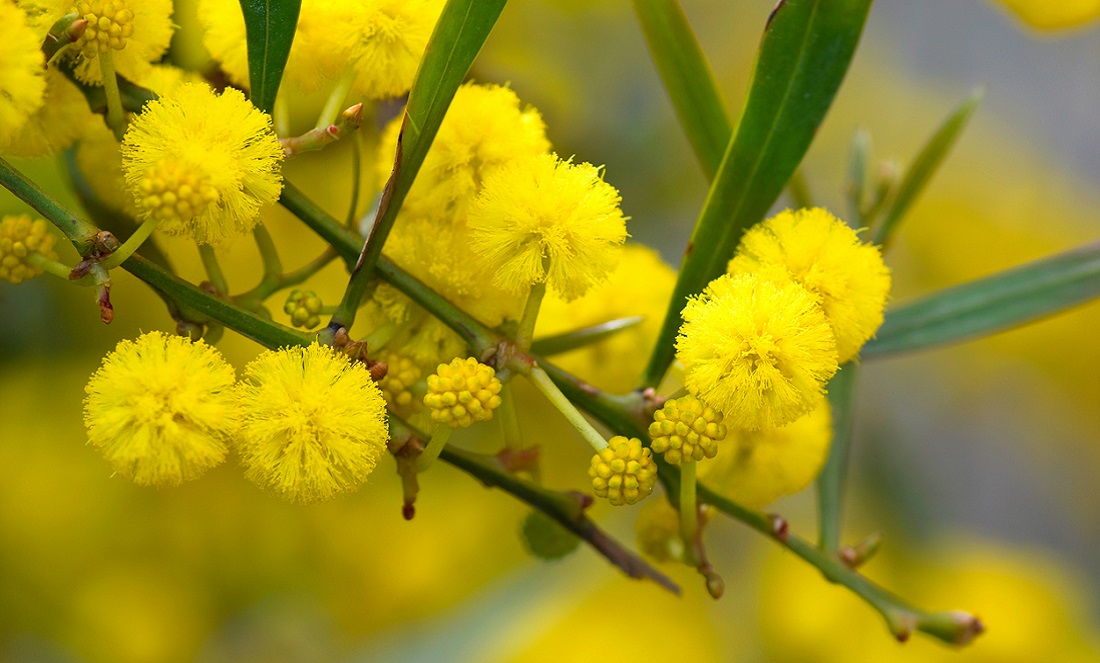The golden wattle has been Australia’s official floral emblem since 1 September 1988.
Aussies appreciate this golden symbol so much we even celebrate National Wattle Day on that date every year.
More than 1000 different wattle species are found in Australia, and most of them are endemic.
In fact, in WA alone, we have more than 500 wattle species, and if you’re wondering why you haven’t seen them all, most are found in the southwest.
They also only deliver those brilliant bursts of fluffy yellow flowers in winter and spring.
A SURVIVAL STRATEGY
Department of Biodiversity, Conservation and Attractions seed scientist Anne Cochrane has managed the Threatened Flora Seed Centre at the WA Herbarium for 24 years.
The Threatened Flora Seed Centre houses the largest collection of seed from rare, threatened and poorly known WA species, including many common species useful for restoration.
The collection includes physically dormant seeds.
Physically dormant seeds have an impermeable coat that prevents germination.
The strategy allows seed banks to survive in the soil and later regenerate the plant population when mature plants are killed by fire.
TURNING UP THE HEAT
A warmer, drier climate with longer, hotter summers and more frequent, intense bushfires is forecast for the southwest.
How will it affect the region’s plant life?
In a recent investigation, Anne simulated summer and bushfire conditions in the laboratory to test how seed from four wattles may cope in the future.
Seeds were exposed to short bursts of temperatures up to 120°C to simulate fire.
Fluctuating temperatures over 2 weeks, 1 month, 2 months and 4 months simulated summer.
More than 40% of Acacia nigricans seeds germinated after exposure to 20°C temperatures with spikes of 65°C over a month.
This suggests long, hot summers may compromise the soil seed bank longevity over time.
BANKING FOR THE FUTURE
“Soil seed banks are a very important resource,” Anne says.
“You might have hundreds or thousands of seeds in the seed soil bank, but not all those seeds will germinate and develop into mature individuals.

“You are always going to lose a lot of seed to predation by rodents or birds [and] decay in the soil.
“When the seedlings do germinate, only a small proportion are likely to survive their first summer.”
Anne says the warming climate won’t wipe out WA’s wattles, but their range could expand or contract.
“If the climate is warmer and drier … plants may take longer to grow because they haven’t got as much water,” she says.
“Something that might have flowered and fruited after 5 years may take 7 years under more stressful conditions.”

“Something that might have flowered and fruited after 5 years may take 7 years under more stressful conditions.”
FILLING KNOWLEDGE GAPS
Anne says not a lot is known about soil seed bank longevity in WA.
“It is becoming increasingly evident that this knowledge is vital for effective future management,” she says.
A better understanding of how temperature affects seed dormancy is crucial, according to Anne.
“In a rapidly changing climate, there is growing pressure to manage, conserve and restore plant species, particularly in already seasonally dry ecosystems,” she says.
Anne hopes to expand the study to investigate species that have conservation status.
The research was published in the Australian Journal of Botany.










